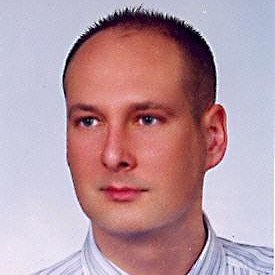Advanced Materials for Bio-Related Applications
A special issue of Nanomaterials (ISSN 2079-4991). This special issue belongs to the section "Biology and Medicines".
Deadline for manuscript submissions: closed (31 March 2023) | Viewed by 49085
Special Issue Editors
2. Department of Organic Chemistry, Bioorganic Chemistry and Biotechnology, Faculty of Chemistry, Silesian University of Technology, 44100 Gliwice, Poland
Interests: biomaterials; biomimetics; biopolymers; hydrogels; nanomedicine
Special Issues, Collections and Topics in MDPI journals
Interests: sensors; laser spectroscopy; optics; nanoparticles; material characterization; nanomaterials; biomaterials
Special Issues, Collections and Topics in MDPI journals
Special Issue Information
Dear Colleagues,
On behalf of the Organizing Committees of the 1st International Conference on Advanced Materials for Bio-Related Applications, AMBRA 2022, to be held on May 16–19, 2022 in Wroclaw, Poland, we have the great pleasure to invite you to became a participant (https://ambra.intibs.pl/).
The AMBRA 2022 conference will be organized for the first time by the interdisciplinary scientific community of the city of Wroclaw, Poland. During the event, we would like to initiate a forum for discussion on advanced materials that find applications in many biological and medical fields. Thus, we hope to meet experts working in nanotechnology, biomaterials, tissue engineering, orthopedics, cardiac surgery, maxillofacial engineering, microbiology, pharmacy, agriculture, and other areas.
The Scope of the AMBRA 2022 Conference:
The aim and mission of the AMBRA 2022 conference is to present the current state of progress in R&D in the field of biomedical sciences and materials engineering, and to create a forum between the participants to discuss cooperation and progress on the subject of the meeting. The conference's subject matter gives hope and looks toward solving the dilemmas related to modern biomaterials, especially in the areas of nanotechnology, advanced biomaterials, orthopaedics, cardiac surgery, tissue engineering, facial-jaw engineering, pharmaceuticals and biomechanics, and medical equipment.
Topics of interest for submission include, but are not limited to:
- Biomaterials
- Nanomaterials
- Bioimaging
- Biological applications
- Medical applications
Prof. Dr. Rafał Jakub Wiglusz
Dr. Anna Lukowiak
Guest Editors
Manuscript Submission Information
Manuscripts should be submitted online at www.mdpi.com by registering and logging in to this website. Once you are registered, click here to go to the submission form. Manuscripts can be submitted until the deadline. All submissions that pass pre-check are peer-reviewed. Accepted papers will be published continuously in the journal (as soon as accepted) and will be listed together on the special issue website. Research articles, review articles as well as short communications are invited. For planned papers, a title and short abstract (about 250 words) can be sent to the Editorial Office for assessment.
Submitted manuscripts should not have been published previously, nor be under consideration for publication elsewhere (except conference proceedings papers). All manuscripts are thoroughly refereed through a single-blind peer-review process. A guide for authors and other relevant information for submission of manuscripts is available on the Instructions for Authors page. Nanomaterials is an international peer-reviewed open access semimonthly journal published by MDPI.
Please visit the Instructions for Authors page before submitting a manuscript. The Article Processing Charge (APC) for publication in this open access journal is 2400 CHF (Swiss Francs). Submitted papers should be well formatted and use good English. Authors may use MDPI's English editing service prior to publication or during author revisions.
Benefits of Publishing in a Special Issue
- Ease of navigation: Grouping papers by topic helps scholars navigate broad scope journals more efficiently.
- Greater discoverability: Special Issues support the reach and impact of scientific research. Articles in Special Issues are more discoverable and cited more frequently.
- Expansion of research network: Special Issues facilitate connections among authors, fostering scientific collaborations.
- External promotion: Articles in Special Issues are often promoted through the journal's social media, increasing their visibility.
- Reprint: MDPI Books provides the opportunity to republish successful Special Issues in book format, both online and in print.
Further information on MDPI's Special Issue policies can be found here.







